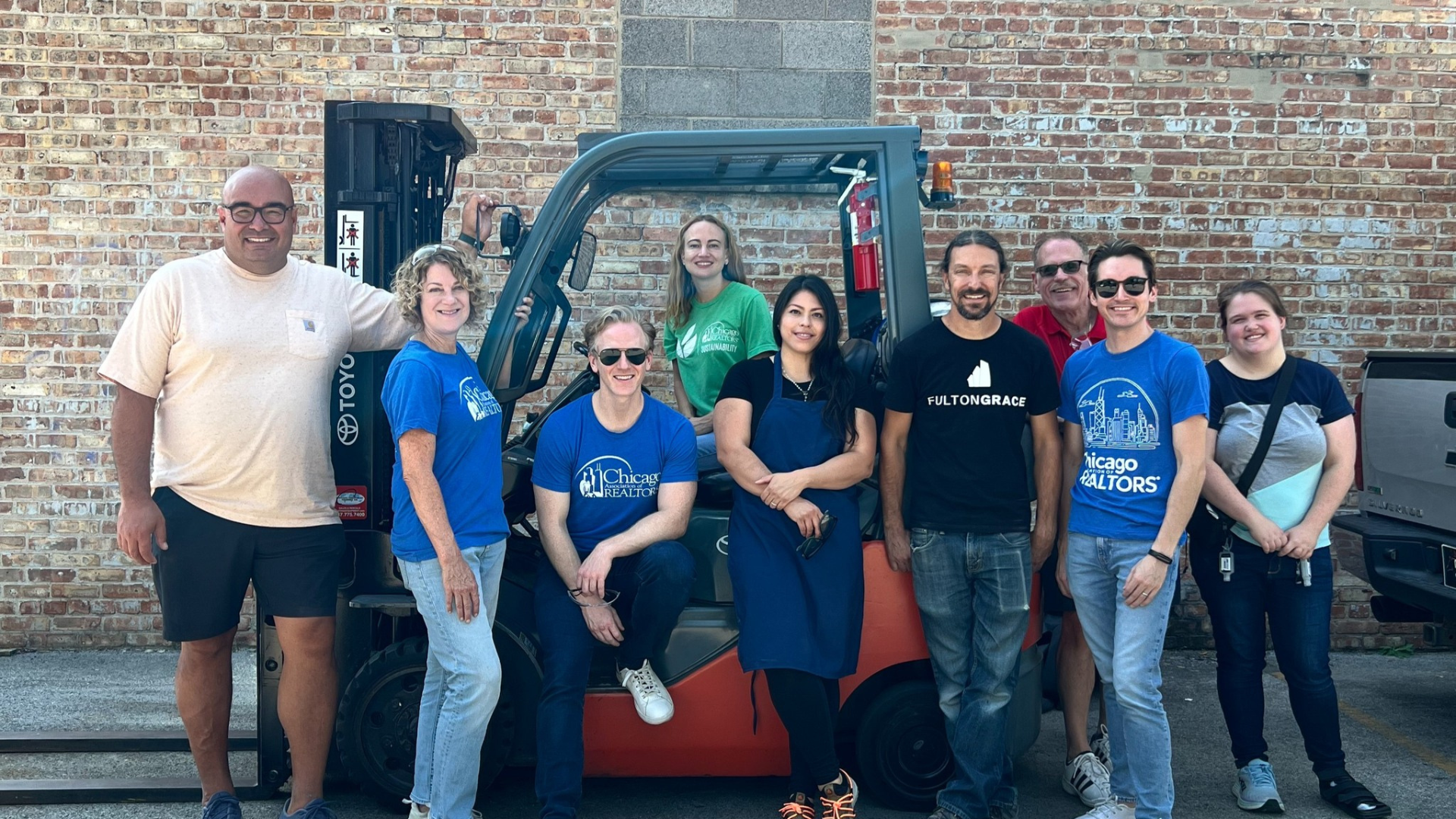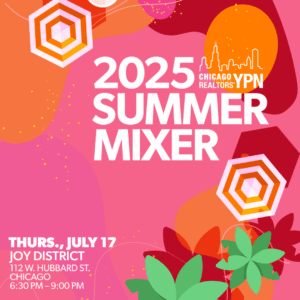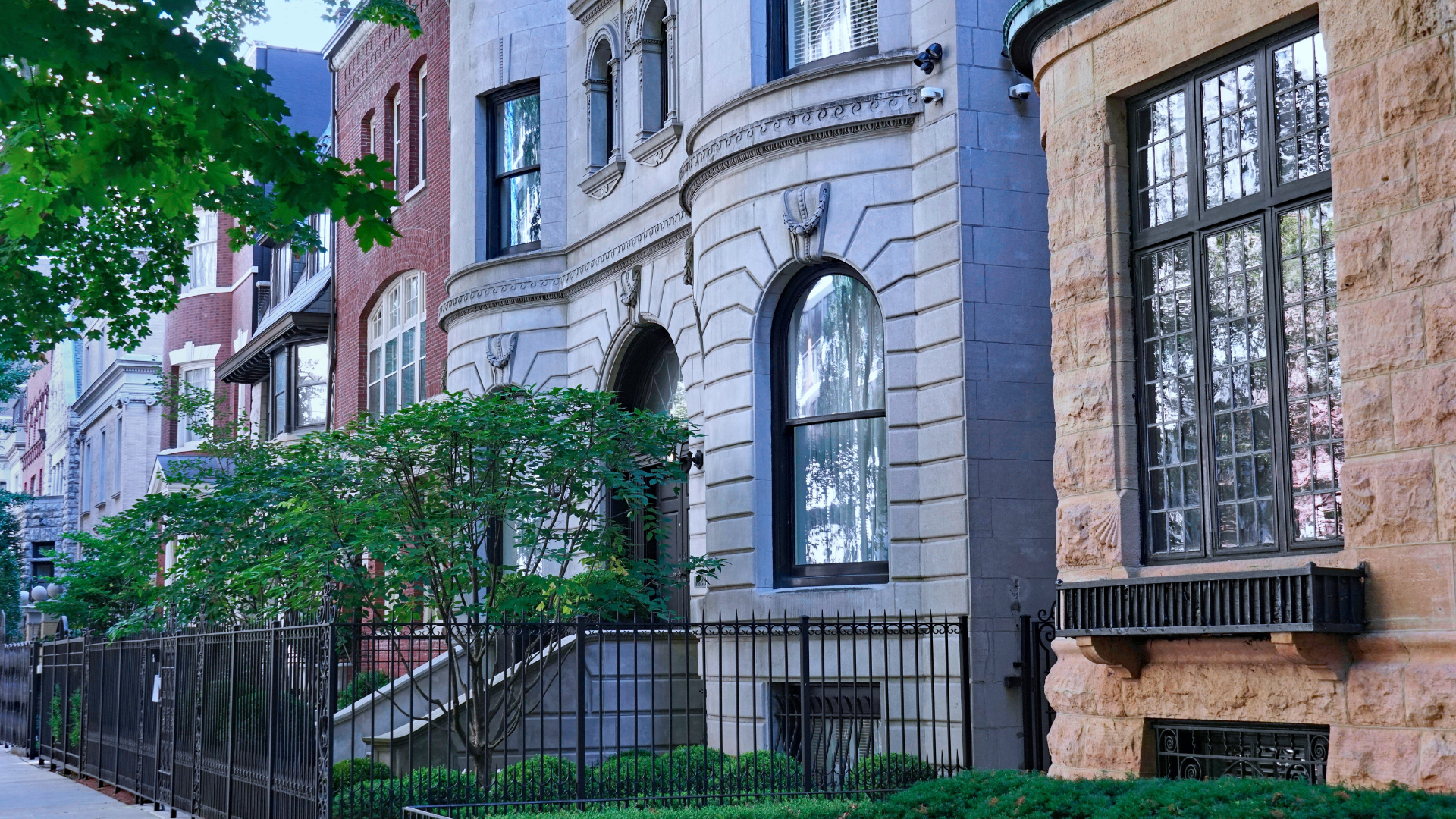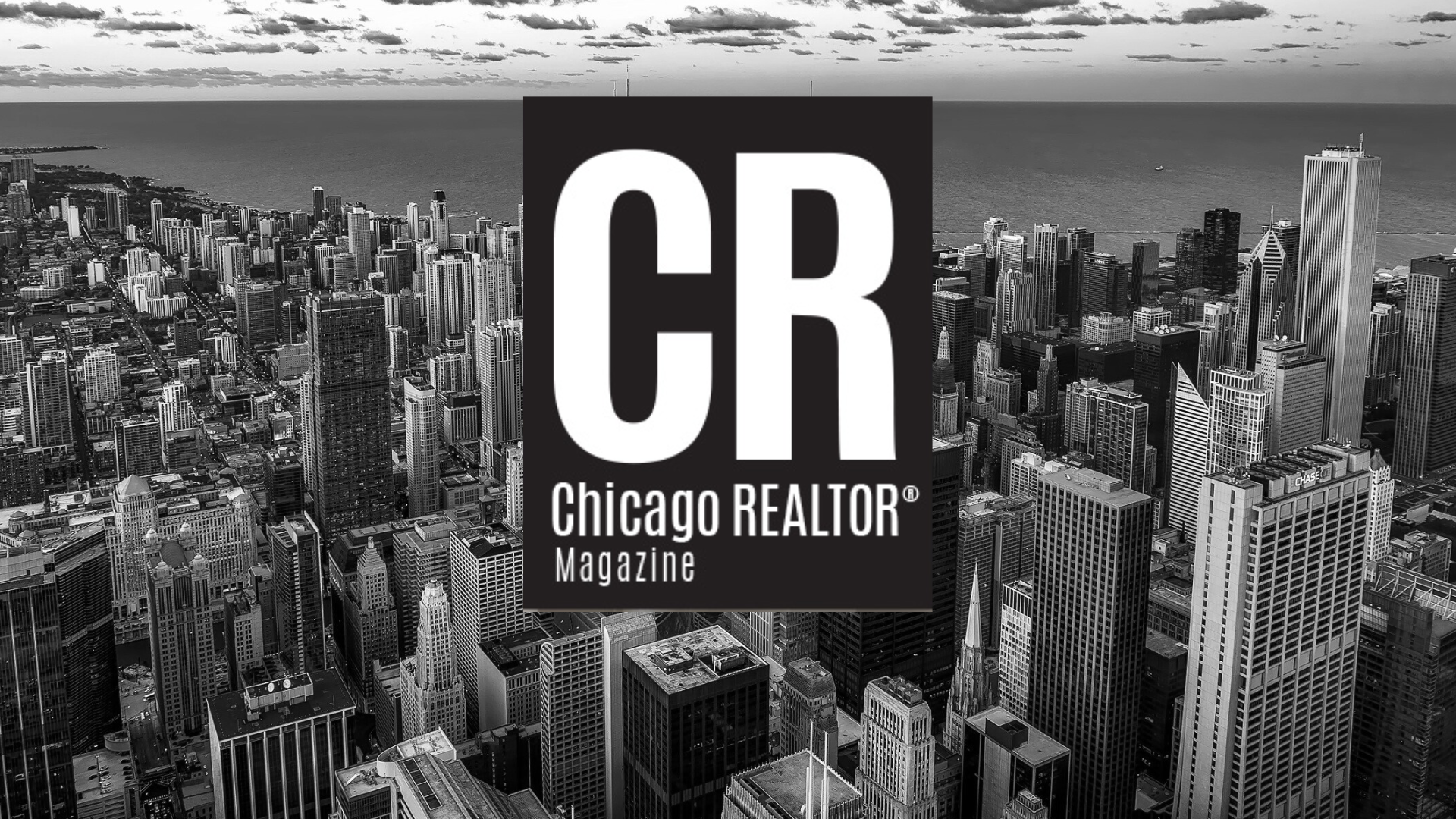You’ve probably seen the signs: bright blue, with a heart shaped American flag and its message translated into six different languages. The Hate Has No Home Here signs (and stickers, magnets and posters) have become a familiar sight in many Chicago neighborhoods — and beyond. The movement started in late 2016, when a group of North Park residents decided to design a poster to hang in their windows to counter the divisive nature of the presidential election. Chicago REALTOR® Carmen Rodriguez, Coldwell Banker Realty, was part of the organizing group. We spoke with her about the campaign and how it continues to resonate here in Chicago and around the world.
CAN YOU TALK ABOUT THE CAMPAIGN
AND HOW YOU GOT INVOLVED?
Carmen: The campaign accidentally became so well-known because it’s one in a series of different community building events our local civic association, the Hollywood-North Park Civic Association, had put on. Over the course of 2015 and 2016 there was a buildup of ambient tension, which is pretty normal — you go through cycles socially (like there is now), this build-up, and focus on a couple of issues, like crimes and social change.
We live in a very diverse community: ethnically diverse, culturally diverse, religiously diverse, economically diverse, every direction. And most of the people who live here really care about that and live here for that reason. There’s this cool mix of everything. Our initial campaign, Ribbons for Peace was, if you see a ribbon on my front stoop, I’m one of the people who lives in the community who appreciates our diversity and this interesting group of people living together. That one did not make national news.
Then, there was a real focus on how LGBTQ+ were being received when they were not living in their own communities. For that, we had a rainbow-colored poster that read, “All are welcome. North Park Neighbors.” That one also did not make national news.
Hate Has No Home Here emerged after there had been an uptick in anti-immigrant sentiment. Our neighborhood is very ethnically diverse, but it’s also a first step for a lot of people. There are over 40 languages spoken at our neighborhood school. A lot of the neighborhood residents are immigrants, and I’m a child of immigrants. So, one of us rather innocently said on our neighborhood Facebook page, “Hey, are we going to do something?” So, we came up with a poster and the idea was to put it out in multiple languages so that we would be speaking to our community, and we picked the languages that were most prevalent in our neighborhood.
One of our neighbors had recently moved to the West Coast, but she was still linked to our neighborhood groups — she loved it, and posted it to her social group. Power of the internet took over, and on Thanksgiving, our civic association website crashed. I was the president at the time, and I was like, “Dude, I’m making pie. I have no time for this. What’s going on?” And then we made national news.
Then, a friend of ours was traveling and had a picture sent to them of the poster in somebody’s big building in Costa Rica. And we were like, “What? We’re global.” We started getting messages from folks in other parts of the world who were like, “Listen, I love the message. I was visiting the US. I’d love to incorporate it locally. Do you have a version of this for Australia? Do you have a version of this for the EU?” We were lucky that part of our core team included two really great graphic artists who were able to adapt the colors and flags and the message. And everything was volunteered, which was really cool too. That’s one of the things we learned: sometimes when you need a little help or you need somebody to support you in a positive message, you just have to ask, and people are very excited and willing to do that.
SOUNDS LIKE A KIND OF A HAPPY ACCIDENT, FORTUITOUS ACCIDENT. WHAT DOES THE ORGANIZATION LOOK LIKE TODAY? OBVIOUSLY, YOU ARE STILL PUTTING OUT YOUR MESSAGE, BUT HOW HAS THE MESSAGE TAKEN ON EVEN GREATER MEANING IN OUR CURRENT ENVIRONMENT?
The organization is basically a group of neighbors. This was never a full-time job for anybody; it was just us. We toyed for a little while about becoming the next ACLU. And we were like, “I can’t do that, I’m a REALTOR®.” What we decided to do was to be a seed planter.
We’re still loosely formed, and we use the power of the message and the power of our experience to teach people how to community organize around a unifying message, and how to put that message out in a manner which serves their community’s needs. So, rather than coming up with a curriculum for schools or coming up with a conflict resolution platform, we say, “This is the message we all care about. This is the way we shared it in our community, and this is what we did with it.”
In our experience, once you know someone and you know them outside of their label — “This is an immigrant,” “This is a Jewish person,” “This is a black person,” — you just know them as, “This is my neighbor and we’re both packaging toys for children in need.” It’s really hard to hate those people. Those are your people. So, we shared the experience and we have planted those seeds in dozens of communities around the country, almost every state, and several other countries.
Now, we have a version of this for Canada, for the European Union, for Australia, for Germany. And that has been, I think, the most successful version of this we could have possibly imagined.
For everybody, it looks different. Some people incorporate the Hate Has No Home Here message in a welcome package when you come to their community. Some people use it as a form of standing firm when they see a certain movement in their community that they feel is anti, just to say, “You can feel strongly about that policy issue or that city ordinance or whatever, but let’s be sure that we’re treating each other In a certain way.” Everybody’s got a different need for that message and sharing our experience has been the way that we’ve been giving people the ability to start that conversation and then work in the direction that makes sense for them.
REALTORS® ARE DEEPLY INGRAINED IN OUR COMMUNITIES. SO, WHAT DOES IT MEAN TO BE A REALTOR®, TO BE DEEPLY INVESTED IN YOUR NEIGHBORHOOD AND INVOLVED IN THIS MOVEMENT?
All of the language that’s included in the messages, it’s intentional. We talked about making a positive message, as opposed to one that had that negative word in it. And then we used the term home. Home is where you take off your fancy clothes, and if you saw the bottom half of someone’s Zoom, you’d be like, “Yeah, working from home.” Home is where you’re comfortable.
As a REALTOR®, we get to see that first visit to someone’s home when they’re not putting on airs and they’re just asking you, “How do I need to prep my house?” And then we see their house when they’ve taken all our advice and they’ve painted it that right color and put in those right cushions. And for me, being able to participate in something that creates that baseline, no matter what your home looks like, no matter how it’s painted or decorated, no matter what your policy beliefs are or your background, home is a place where you don’t include these terrible things.
This is just such a natural place for me — to be a part of where people trust me with their homes and to help them find their homes. To participate in this message that home is a safe place, it just feels really comfortable.
That being said, it’s been really important to me that my participation in that organization be separate from my business. I am not the boss, I am not in charge, and it’s not mine. It’s been really important to me that Hate Has No Home Here stays universal and belongs to itself and not to some money-making, for-profit business enterprise. Ribbons for Peace wasn’t that, All are Welcome wasn’t that, and Hate Has No Home Here isn’t that, either. I’m a capitalist through and through, but there are some things that are bigger than money, and this is one of those.
We have the artwork, which true to our core mission, is available for free download.
Our website, hatehasnohomehere.org, has a national map of pinpoints where people have been creating projects and you can build on what’s happening in those local areas as well.
The important thing, and particularly for folks who are in private industry, is to note that the usage guidelines require that folks don’t attribute or assign. You can use the artwork, you can print a sign as it is, or you can actually come over to my house in my backyard, because I have stacks of signs and posters and bumper stickers, because the original distribution system was, “if you want one, come on over” — very organic and casual.
There are multiple language varieties available, too. As a side note, one of the interesting things we learned is there are several languages in which the word hate does not appear. They don’t have a word for it.
THAT’S COOL. I JUST GOT CHILLS.
Yeah, we did too. There are so many stories of people who have been inspired by this.
I think so many times when we see really big issues like hate or racial injustice, we’re like, “Wow, that’s a really big issue. I hope somebody figures it out.” The thing we’ve learned is, if you want to help people get past some of these really big problems, you just have to try. Get together with two or three people and try. Sometimes, it’s Ribbon for Peace and nobody notices, but sometimes it’s Hate Has No Home Here and thousands and thousands and thousands of people notice. It’s the “keep trying” that ultimately wins the day. REALTORS® know that.
PART OF THE BUSINESS, RIGHT?
Exactly right.








